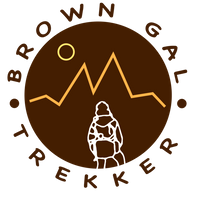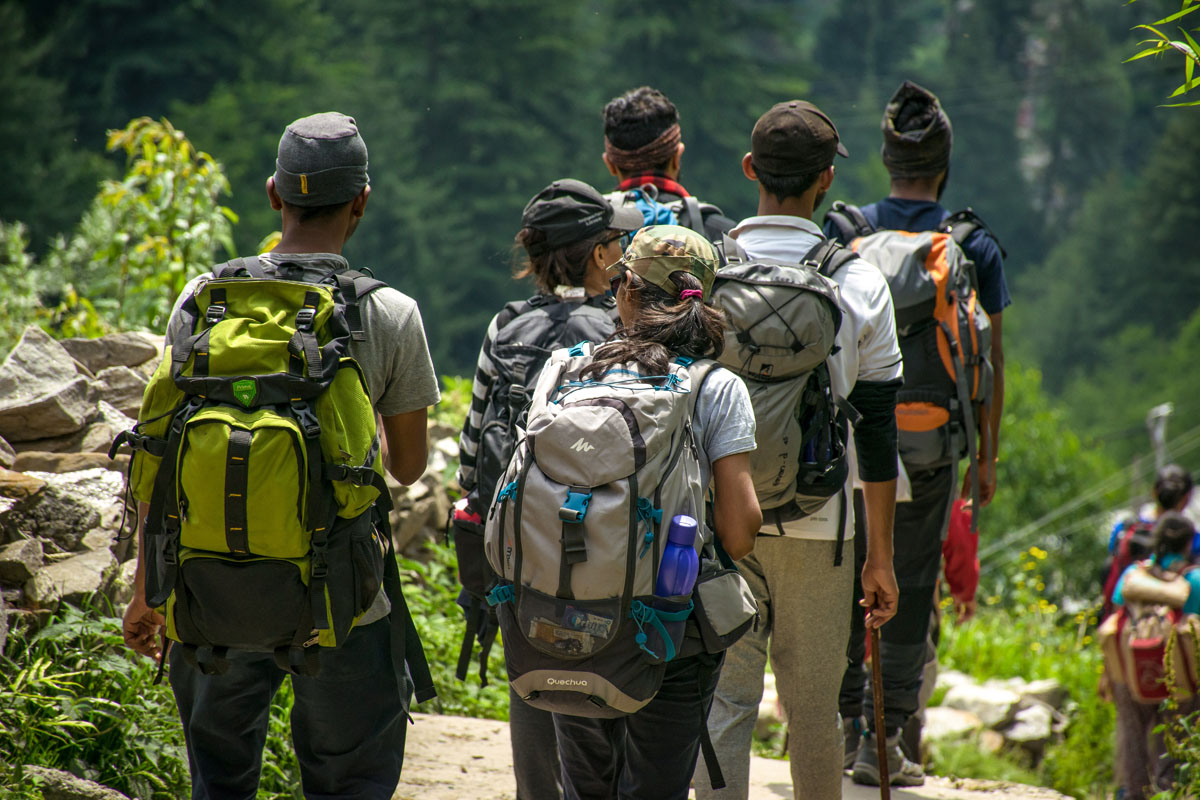Hiking and Trekking: What's the Difference?
BY JESSE FOUTCH
The terms hiking and trekking are often used interchangeably amongst members of the outdoor community, and while they both basically involve getting outside and walking around, there are some major differences between the two. Learning about the differences between hiking and trekking will help you determine which outdoor adventure you would like to participate in.
The dictionary definition of hiking is, “a long walk especially for pleasure or exercise,” while trekking is defined as, “a trip or movement especially when involving difficulties or complex organization.” Hiking typically involves a trail that can be completed in two to eight hours. Hiking is viewed as a leisure activity that can also be classified as a means of exercise. Both trekking and hiking have been known to improve your physical and mental health.
Based on these two definitions, one might assume that trekking is more challenging and most likely requires more gear than the contents of your daypack. In contrast preparing for a hike does not require as much planning or gear beyond hiking shoes, snacks, and water. Although it never hurts to plan ahead, and most experienced hikers recommend it, you can easily lace up your shoes and start a hike at any given moment.
Unlike hiking, you can trek on a variety of terrains, not just in nature. Trekking also rarely takes place on a defined trail. You will most likely have to have basic navigation skills and use a compass and/or a map to assist you on your journey. Some resources also recommend trekking with a group and in some cases, with an experienced guide. While a hiking trip is typically completed in one day, trekking can last for weeks or months, with some destinations being tens, hundreds, or thousands of miles away from the starting point.
How do you know which activity is right for you? Hiking is great for anyone who feels comfortable walking for a few hours and is looking to spend a short amount of time surrounded by nature. Trekking is not for beginners, as it is a high-intensity activity that requires orientation and survival skills. Below, we’ll outline the main differences between hiking and trekking.
Terrain
As stated above, hiking means leisurely walking on a set trail in nature that can be completed in as little as 15 minutes or as long as 8 hours. Hiking can take place on a dirt or paved path, and most hiking trails feature man made signs to ensure you’re heading in the right direction.
Trekking typically involves mapping out a path from Point A to Point B and traveling across various types of landscape, some of which has never been explored before. Popular point-to-point trails, like the Appalachian Trail, which stretches from Georgia to Maine, or the Pacific Crest Trail, a popular Pacific coast trail that starts at the Mexico border and ends at the Canadian border, will feature blazes or an official logo scattered throughout the trail, but for the most part, those participating in a trekking trip will have to depend on natural landmarks, like mountains, rivers and lakes, to know they’re on track.
Distance
A hike can be anywhere from half a mile to 18 miles. There is always a set distance on a defined trail, and it is very rare that those going on a hike will have to establish an alternate path. Hiking trails typically start and end at the same point. It’s also important to note that hiking is often confused with backpacking. Hiking trips that last more than two days are better defined as backpacking trips.
Trekking, however, consists of a mapped out journey that can last for thousands of miles through the backcountry. Trekking often involves changing your path to avoid obstacles, and most people going on trekking journeys will carry multiple maps and a GPS system to help them stay on track and update their path as needed.
Equipment
Hiking doesn’t require as much equipment as trekking, and depending on the trail, a hike can be completed with simply the right shoes and a bottle of water. For more strenuous hikes, it’s recommended that you carry a daypack filled with first aid kit, snacks, a map or compass, and plenty of water.
Trekking requires extensive planning and strategic gear selection. You’ll want to take everything you’d take on your hiking trip plus some. Depending on the length of your trek, you may need multiple pairs of hiking shoes, and you may even need to pre-ship food or supplies to specific destinations along your journey. You’ll need significantly more food and water, a water filter, duct tape, a multi-tool, headlamp, backpacking stove, sleeping pad, and much more, depending on the terrain you will be encountering throughout your journey.
Benefits
Hiking has an endless list of health benefits. Not only does it help eliminate stress and anxiety, but research shows hiking can also lower your risk of heart attack or stroke. Hiking can increase your self-esteem, strengthen your core, and it’s an all around great form of exercise.
Evidence has shown that trekking strengthens your cardiovascular system, cleanses your lungs and promotes weight loss. Trekking also strengthens you mentally. Being out in nature for days, weeks, or months, while battling the elements and depending on your own personal survival skills can definitely challenge even the strongest minds.
Another characteristic that differentiates hiking and trekking is transportation to the trailhead or start of your journey. For most every hike, you can drive your car to the trailhead, park and get started. When it comes to trekking, it is rare for any area of the trek to be easily accessed by a vehicle.
Whether you are trying to decide if trekking or hiking is for you, it is important to consider what your end goal is. While they both allow you to get out and explore nature, they are two totally different adventures that require different levels of experience and types of equipment.
ABOUT THE AUTHOR
Jesse is a lifelong Tennessee resident and enjoys hiking, camping, and the outdoors. By day he is a web designer/developer and runs tnhikingreport.com in his off time.



